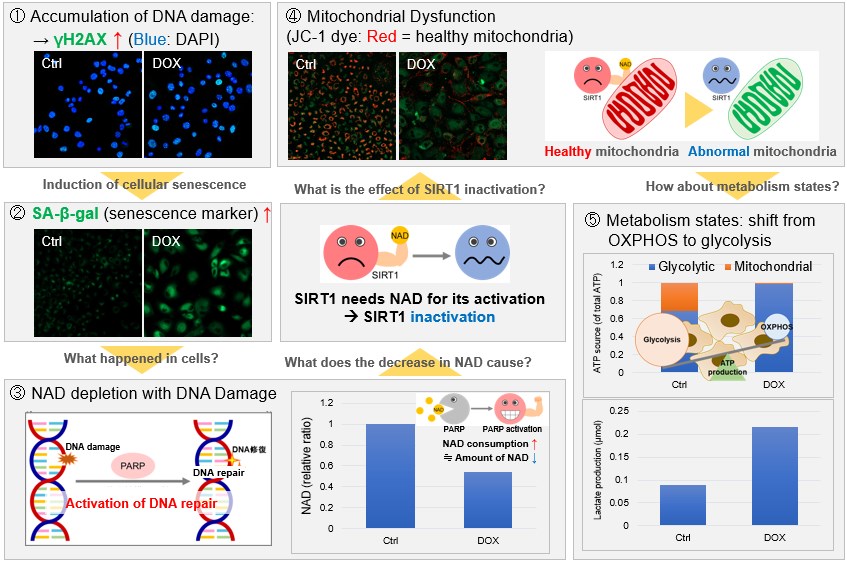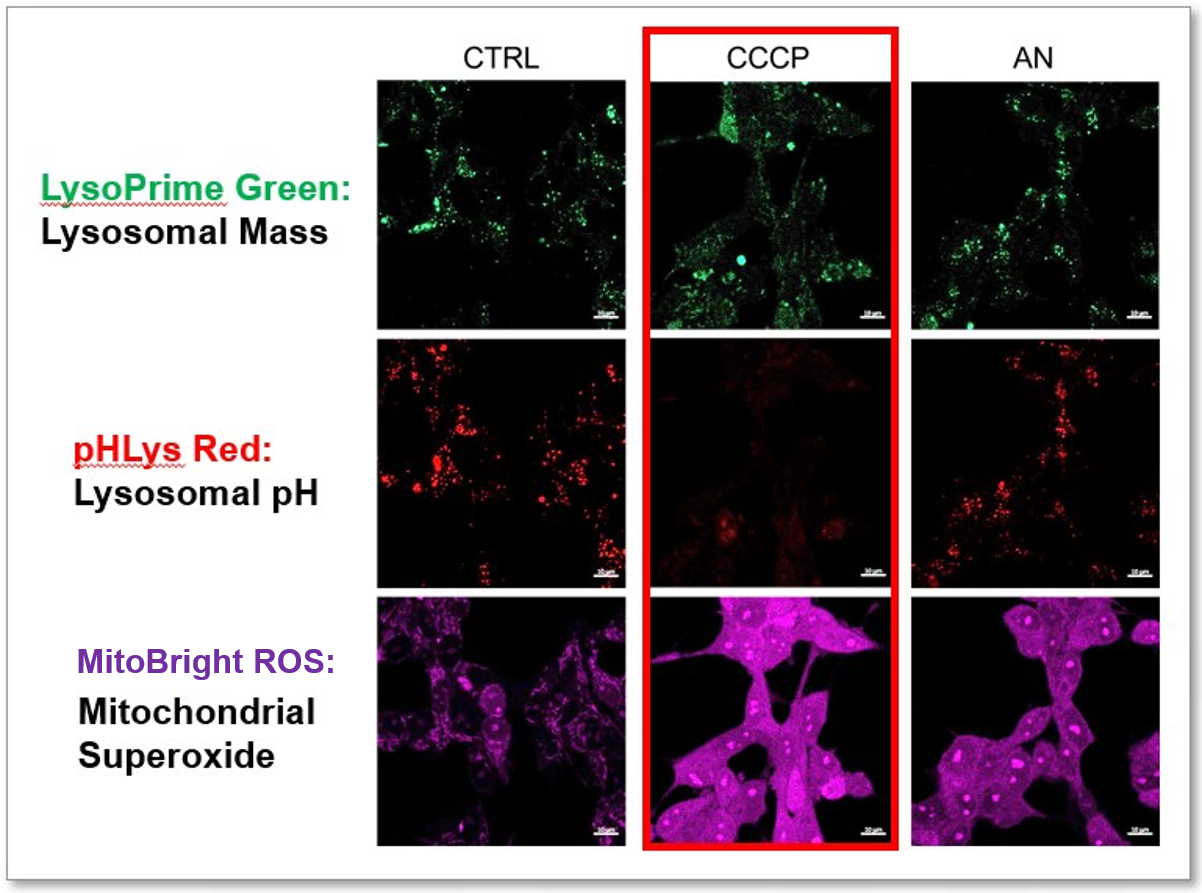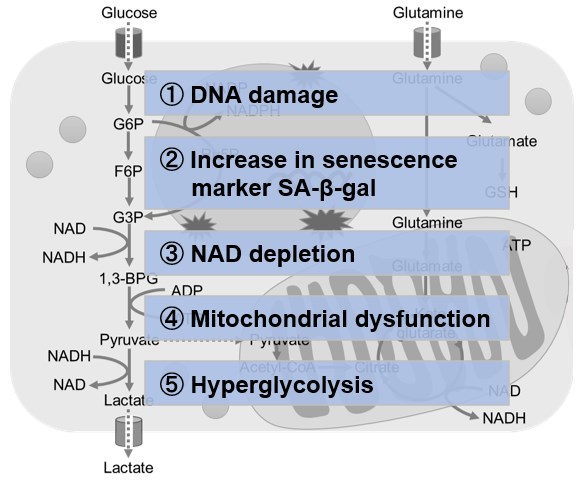|
This article focusing on the mitochondrial protein folding stress is particularly significant in activated neural stem cells (NSCs) and neural progenitor cells (NPCs) within the neurogenic niche. This stress increases with age, leading to dysregulated cell cycles and mitochondrial activity in activated NSCs and NPCs in the dentate gyrus.
|
|
The mitochondrial unfolded protein response regulates hippocampal neural stem cell aging
Click here for the original article: Chin-Ling Wang, et. al., Cell Metabolism (2023)
Point of Interest
- - Elevated mitochondrial protein folding stress in aging neural stem cells
- - SIRT7 safeguards neural stem cells by reducing mitochondrial protein folding stress
- - SIRT7 overexpression enhances neurogenesis and cognitive function in aged mice
|
| Related Techniques |
|
|
|
|
|
|
|
|
|
|
|
|
|
|
|
|
| Related Applications |
Metabolic shift to glycolysis in senescenct cells
|
 |
Lysosomal Function and Mitochondrial ROS

-
CCCP and Antimycin are recognized inducers of mitochondrial ROS, linked to the loss of mitochondrial membrane potential. Recent studies have shown that CCCP induces not only mitochondrial ROS but also lysosomal dysfunction. To observe mitochondrial ROS, HeLa cells were labeled with MitoBright ROS Deep Red for Mitochondrial Superoxide Detection, and the lysosomal mass and pH were independently detected with LysoPrime Green and pHLys Red. Co-staining with MitoBright ROS and Lysosomal dyes revealed that CCCP, unlike Antimycin, triggers concurrent lysosomal neutralization and mitochondrial ROS induction.
Reference: Benjamin S Padman, et. al., Autophagy (2013)
Products in Use
- LysoPrime Green
- pHLys Red
- Lysosomal Acidic pH Detection Kit
- MitoBright ROS - Mitochondrial Superoxide Detection
|


















